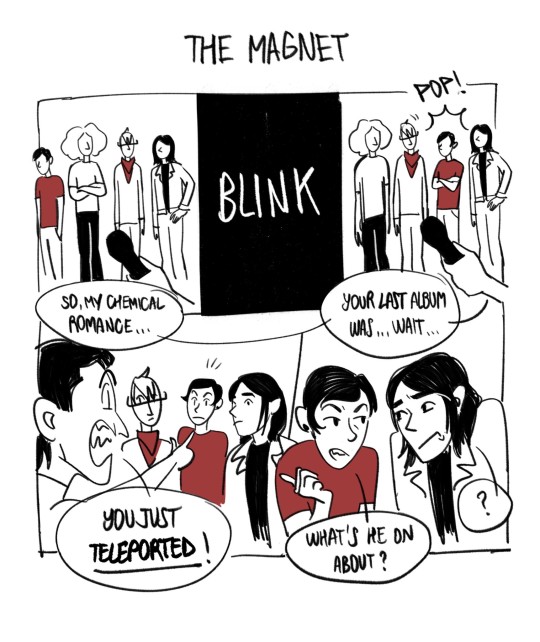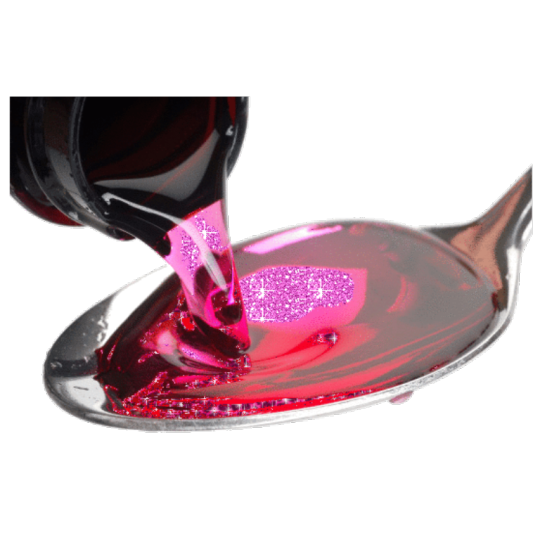#materials and chemicals
Explore tagged Tumblr posts
Text






























HUGE music blinkie dump.. found some mayhem ones too which i was surprised about!!
#blinkies ⊹#music#nu metal#metal#heavy metel#black metel#emo#web graphics#web resources#dividers#pixel art#cute pixels#decome#pixels#carrd material#bands#mayhem#hole#my chemical romance#evanescence#the cardigans#panchiko#korn#linkin park#system of a down#blink 182#jack off jill#the cure#blinkies#tally hall
19K notes
·
View notes
Text
Exploring Emerging Applications in the 1-Decene Market

Introduction
1-Decene, a key alpha-olefin compound, has long been revered for its diverse applications across various industries. From plastics to detergents, its unique chemical properties make it an indispensable ingredient in countless manufacturing processes. However, as industries evolve and technology advances, new applications for 1-Decene are continually emerging, reshaping the landscape of its market.
In this article, we delve into the burgeoning realm of emerging applications for 1-Decene, exploring recent developments and their implications for stakeholders.
According to Next Move Strategy Consulting, the global 1-Decene Market is predicted to reach USD 1034.0 million by 2030 with a CAGR of 5.8% from 2022-2030.
Download FREE Sample: https://www.nextmsc.com/1-decene-market/request-sample
Understanding the 1-Decene Market
Before delving into emerging applications, it's crucial to grasp the current state of the 1-Decene market. With its widespread use in the production of polymers, surfactants, and lubricants, the demand for 1-Decene has been steadily rising. Factors such as urbanization, industrialization, and increasing consumer demands for high-performance products continue to drive market growth.
According to recent market analyses, the global 1-Decene market is projected to witness substantial expansion in the coming years, with a compound annual growth rate (CAGR) exceeding 4%. This growth trajectory underscores the compound's pivotal role in various industries and sets the stage for exploring new avenues of application.
Inquire before buying: https://www.nextmsc.com/1-decene-market/inquire-before-buying
Emerging Applications of 1-Decene
Adhesives and Sealants: One of the burgeoning applications of 1-Decene lies in the adhesives and sealants industry. Its ability to enhance adhesion and improve the performance of adhesive formulations has garnered attention from manufacturers seeking to develop high-strength, durable bonding solutions.
Recent advancements in polymer chemistry have unlocked new opportunities for incorporating 1-Decene into adhesive formulations, catering to diverse applications ranging from automotive assembly to construction.
Recent News: Leading adhesive manufacturers have announced successful trials of 1-Decene-based formulations, demonstrating superior bonding strength and resistance to environmental stressors. This development signals a promising future for 1-Decene in the adhesives and sealants market, driving demand for the compound and prompting further innovation.
Personal Care Products: In the realm of personal care products, 1-Decene is increasingly being utilized as a versatile ingredient in formulations such as shampoos, lotions, and cosmetics. Its emollient properties, coupled with its compatibility with a wide range of other ingredients, make it an ideal choice for enhancing product texture, stability, and performance.
Furthermore, the growing consumer preference for natural and sustainable ingredients has propelled the use of 1-Decene derived from renewable sources in eco-friendly personal care formulations.
Recent News: Major cosmetic brands have announced plans to incorporate sustainably sourced 1-Decene into their product lines, capitalizing on consumer demand for clean beauty solutions. This trend reflects a shift towards natural ingredients and underscores the potential of 1-Decene to revolutionize the personal care industry.
Agrochemicals and Crop Protection: The agricultural sector represents another promising frontier for the application of 1-Decene. As agricultural practices evolve to meet the challenges of feeding a growing global population, there is an increasing need for innovative crop protection solutions. 1-Decene's role as a precursor in the synthesis of specialty chemicals used in herbicides, insecticides, and fungicides positions it as a valuable asset in the development of next-generation agrochemical formulations.
Recent News: Agrochemical companies have announced successful field trials of novel formulations incorporating 1-Decene-derived active ingredients, demonstrating enhanced efficacy and environmental safety. This breakthrough highlights the potential of 1-Decene to address pressing challenges in agriculture while minimizing ecological impact.
Construction Materials: In the construction industry, 1-Decene is finding applications in the development of advanced materials such as thermoplastic elastomers, sealants, and waterproofing membranes. Its compatibility with various polymers and its ability to impart desirable properties such as flexibility, durability, and weather resistance make it a sought-after additive in construction formulations.
Recent innovations in polymer chemistry have led to the creation of 1-Decene-based compounds that offer superior performance and longevity, contributing to the construction sector's quest for sustainable and high-performance materials.
Recent News: Construction material manufacturers have reported successful integration of 1-Decene-based additives into their product lines, resulting in enhanced durability and weatherability of building materials. This development signals a paradigm shift towards the adoption of advanced materials in construction applications, driven by the unique properties of 1-Decene and its derivatives.
Fuel Additives: With growing concerns over environmental pollution and the need to reduce emissions, there is a rising demand for cleaner-burning fuels and fuel additives. 1-Decene's chemical structure makes it an ideal candidate for use in fuel additives aimed at improving combustion efficiency, reducing engine deposits, and lowering exhaust emissions.
Recent advancements in fuel additive technology have demonstrated the efficacy of 1-Decene-derived compounds in enhancing fuel performance while meeting stringent environmental regulations.
Recent News: Energy companies and fuel additive manufacturers have unveiled new formulations incorporating 1-Decene-based additives, resulting in improved fuel economy and reduced emissions in internal combustion engines. This breakthrough underscores the potential of 1-Decene to play a crucial role in the transition towards cleaner and more sustainable transportation fuels.
Electronics and Electrical Components: The electronics industry is increasingly incorporating 1-Decene-based materials in the production of electrical insulation materials, wire coatings, and semiconductor encapsulants. The compound's excellent dielectric properties, thermal stability, and chemical resistance make it well-suited for applications requiring high-performance insulation and protection against electrical hazards. Recent advancements in polymer science have enabled the development of 1-Decene-based materials with tailored properties to meet the stringent requirements of modern electronics manufacturing.
Recent News: Electronics manufacturers have announced successful integration of 1-Decene-based polymers into their production processes, resulting in enhanced reliability and performance of electronic components. This development highlights the role of 1-Decene in driving innovation in the electronics industry and underscores its potential to revolutionize the design and manufacturing of next-generation electronic devices.
Medical and Healthcare Products: The medical and healthcare sector is exploring the use of 1-Decene in the production of specialty materials such as medical-grade adhesives, polymer coatings for medical devices, and drug delivery systems. The compound's biocompatibility, inertness, and tunable properties make it an attractive option for applications requiring safe and reliable materials for use in contact with biological tissues and fluids. Recent advancements in biomaterials science have paved the way for the development of 1-Decene-based materials that meet the stringent requirements of medical and healthcare applications.
Recent News: Pharmaceutical companies and medical device manufacturers have announced successful trials of 1-Decene-based materials in various healthcare applications, demonstrating their biocompatibility and efficacy. This development opens up new possibilities for the use of 1-Decene in medical devices, implants, and drug delivery systems, offering enhanced performance and patient outcomes in the field of healthcare.Top of Form
Conclusion
The emergence of new applications for 1-Decene underscores its versatility and adaptability in meeting the evolving needs of various industries. From adhesive technology to personal care and agriculture, the compound's unique properties continue to unlock new opportunities for innovation and growth.
As industries embrace sustainability and strive for enhanced performance, 1-Decene is poised to play a pivotal role in shaping the future of countless products and processes. By staying abreast of emerging trends and harnessing the potential of 1-Decene, stakeholders can capitalize on market opportunities and drive transformative change across diverse sectors.
#1-decene market#materials and chemicals#chemical innovations#market research#market trends#industry insights#global market
0 notes
Text
Shielding Tomorrow: Exploring the Anti-Corrosion Coatings Market
The global Anti-Corrosion Coating Market size is predicted to reach USD 63.72 billion by 2030, witnessing a CAGR of 7.9% from 2020-2030.
The global anti-corrosion coating market observes lucrative growth due to factors such as increasing government initiatives to improve public infrastructures, favorable regulatory standards for products with low Volatile Organic Compound (VOC), rising awareness about ecofriendly products, as well as augmentation in residential and commercial projects.
#anti-corossion coatings#materials and chemicals#market research#market trends#business inisights#industry
0 notes
Text










⭒ ⋆ 🍷 red and black blinkies ⋆ฺ࿐♣️ ⁎˚
#♰ ﹒ ⁺ 𝗀𝗁𝗈𝖮𝘀𝘁’𝗌 𝗉𝗈𝗌𝗍𝗌! ◌ 𖤐 ♩#blinkies#my chemical romance#emily the strange#horror#photography#web weaving#webcore#old web#old internet#web graphics#web resources#web design#web finds#carrd#carrd resources#carrd stuff#carrd moodboard#carrd graphics#carrd inspo#carrd decor#animated gif#gif#carrd dividers#carrd material#divider#red moodboard#black moodboard#carrd layouts#art
688 notes
·
View notes
Text

just something i find funny watching my chem interviews lol
#take a shot every time you see frank materialize next to g#my chemical romance#frank iero#gerard way#ray toro#mikey way#mcr#art#digital art#comics
973 notes
·
View notes
Text
look alive, sunshine









#carrd material#transparent png#aesthetic#transparent#random moodboard#messy moodboard#pngs#random png#fashion png#mcr#my chemical romance#danger days
615 notes
·
View notes
Text
On the 35th anniversary of The École Polytechnique massacre never forget the 14 women who were killed for being women in science
The École Polytechnique massacre (French: tuerie de l'École polytechnique), also known as the Montreal massacre, was an antifeminist mass shooting that occurred on December 6, 1989 at the École Polytechnique de Montréal in Montreal, Quebec. Fourteen women were murdered; another ten women and four men were injured.
Perpetrator Marc Lépine, armed with a legally obtained Ruger Mini-14 semi-automatic rifle and hunting knife, entered a mechanical engineering class at the École Polytechnique. He ordered the women to one side of the classroom, and instructed the men to leave. After claiming that he was "fighting feminism", he shot all nine women in the room, killing six. The shooter then moved through corridors, the cafeteria, and another classroom, specifically targeting women, for just under 20 minutes. He killed eight more women before ending his own life. In total, 14 women were killed, and 14 others were injured.
The massacre is now widely regarded as an anti-feminist attack and representative of wider societal violence against women; the anniversary of the massacre is commemorated as the National Day of Remembrance and Action on Violence Against Women. After the attack, Canadians debated various interpretations of the events, their significance, and the shooter's motives. Other interpretations emphasized the shooter's abuse as a child or suggested that the massacre was the isolated act of a madman, unrelated to larger social issues
The incident led to more stringent gun control laws in Canada, and increased action to end violence against women. It also resulted in changes in emergency services protocols to shootings, including immediate, active intervention by police. These changes were later credited with minimizing casualties during incidents in Montreal and elsewhere. The massacre remained the deadliest mass shooting in Canada until the 2020 Nova Scotia attacks over 30 years later.[4]
Contents
Timeline
Sometime after 4 p.m. on December 6, 1989, Marc Lépine arrived at the building housing the École Polytechnique, an engineering school affiliated with the Université de Montréal, armed with a Ruger Mini-14 rifle and a hunting knife.[5] He had purchased the gun less than a month earlier on November 21 in a Checkmate Sports store in Montreal. He had told the clerk that he was going to use it to hunt small game.[6] He had been in and around the École Polytechnique building at least seven times in the weeks leading up to December 6.[5]
The perpetrator first sat in the office of the registrar on the second floor for a while, where he was seen rummaging through a plastic bag. He did not speak to anyone, even when a staff member asked if she could help him.[2] He then left the office and was seen in other parts of the building before entering a second-floor mechanical engineering class of about sixty students at about 5:10 p.m.[7] After approaching the student giving a presentation, he asked everyone to stop everything and ordered the women and men to opposite sides of the classroom. No one moved at first, believing it to be a joke until he fired a shot into the ceiling.[8][9]
Lépine then separated the nine women from the approximately fifty men and ordered the men to leave.[10][9] He asked the women whether they knew why they were there; instead of replying, a student asked who he was. He answered that he was fighting feminism.[9][11] One of the students, Nathalie Provost, protested that they were women studying engineering, not feminists fighting against men or marching to prove that they were better. He responded by opening fire on the students from left to right, killing six—Hélène Colgan, Nathalie Croteau, Barbara Daigneault, Anne-Marie Lemay, Sonia Pelletier, and Annie St-Arneault—and wounding three others, including Provost.[9][11] Before leaving the room, he wrote the word "shit" twice on a student project.[10]
The gunman continued into the second-floor corridor and wounded three students before entering another room where he twice attempted to shoot a female student. When his weapon failed to fire, he entered the emergency staircase where he was seen reloading his gun. He returned to the room he had just left, but the students had locked the door; he failed to unlock it with three shots fired into the door. Moving along the corridor, he shot at others, wounding one, before moving towards the financial services office, where he shot and killed Maryse Laganière through the window of the door she had just locked.[12][11]
The perpetrator next went down to the first-floor cafeteria, in which about 100 people were gathered. He shot nursing student Barbara Maria Klucznick near the kitchens and wounded another student, and the crowd scattered. Entering an unlocked storage area at the end of the cafeteria, the gunman shot and killed Anne-Marie Edward and Geneviève Bergeron, who were hiding there. He told a male and female student to come out from under a table; they complied and were not shot.[13]: 30 [11]
The shooter then walked up an escalator to the third floor where he shot and wounded one female and two male students in the corridor. He entered another classroom and told the men to "get out", shooting and wounding Maryse Leclair, who was standing on the low platform at the front of the classroom, giving a presentation.[13]: 26–27 He fired on students in the front row and then killed Maud Haviernick and Michèle Richard who were trying to escape the room, while other students dived under their desks.[11][13]: 30–31 The killer moved towards some of the female students, wounding three of them and killing Annie Turcotte. He changed the magazine in his weapon and moved to the front of the class, shooting in all directions. At this point, the wounded Leclair asked for help; the gunman unsheathed his hunting knife and stabbed her three times, killing her. He took off his cap, wrapped his coat around his rifle, exclaimed, "Oh shit", and then killed himself with a shot to the head, 20 minutes after having begun his attack.[14][13]: 31–32 About 60 unfired cartridges remained in the boxes he carried with him.[14][13]: 26–27
After briefing reporters outside, Montreal Police director of public relations Pierre Leclair entered the building and found his daughter Maryse's stabbed body.[15][16]
The Quebec and Montreal governments declared three days of mourning.[15] A joint funeral for nine of the women was held at Notre-Dame Basilica on December 11, 1989, and was attended by Governor General Jeanne Sauvé, Prime Minister Brian Mulroney, Quebec premier Robert Bourassa, and Montreal mayor Jean Doré, along with thousands of other mourners.
The Victims
Geneviève Bergeron (born 1968), civil engineering student
Hélène Colgan (born 1966), mechanical engineering student
Nathalie Croteau (born 1966), mechanical engineering student
Barbara Daigneault (born 1967), mechanical engineering student
Anne-Marie Edward (born 1968), chemical engineering student
Maud Haviernick (born 1960), materials engineering student
Maryse Laganière (born 1964), budget clerk in the École Polytechnique's finance department
Maryse Leclair (born 1966), materials engineering student
Anne-Marie Lemay (born 1967), mechanical engineering student
Sonia Pelletier (born 1961), mechanical engineering student
Michèle Richard (born 1968), materials engineering student
Annie St-Arneault (born 1966), mechanical engineering student
Annie Turcotte (born 1969), materials engineering student
Barbara Klucznik-Widajewicz (born 1958), nursing student
#December 6 1989#The École Polytechnique massacre (French: tuerie de l'École polytechnique)#The Montreal massacre#Canada#Quebec#Montreal#the National Day of Remembrance and Action on Violence Against Women#Gun violence#Make violence#Gun control#Men claim to protect women#But the men just obeyed and left their classmates in the hands of a gunman#Geneviève Bergeron (born 1968) civil engineering student#Barbara Daigneault (born 1967) mechanical engineering student#Anne-Marie Edward (born 1968) chemical engineering student#Maryse Laganière (born 1964) budget clerk in the École Polytechnique's finance department#Maryse Leclair (born 1966) materials engineering student#Anne-Marie Lemay (born 1967) mechanical engineering student#Sonia Pelletier (born 1961) mechanical engineering student#Barbara Klucznik-Widajewicz (born 1958) nursing student#Annie Turcotte (born 1969) materials engineering student#Hélène Colgan (born 1966) mechanical engineering student#Michèle Richard (born 1968) materials engineering student#Annie St-Arneault (born 1966) mechanical engineering student#Nathalie Croteau (born 1966) mechanical engineering student#Maud Haviernick (born 1960) materials engineering student
112 notes
·
View notes
Photo




heard you guys like wet gerard way
#mcr#my chemical romance#gerard way#safe and sound#btw gotta say#kyosuke himuro????#quality dilf material in this video#no wonder gerard collabed
1K notes
·
View notes
Text






some mcr patches i impulsively made using cut up bits of painting canvas + pens and alcohol markers
#is painting canvas the best material for patches? probably not but i dont care#i have been frothing over the thought of patches for a bit now and i suddenly realised that canvas could work#originally i only intended to make a patch for each album but then i (a pretty new mcr fan)#found out about pool boy at the vampire mansion and knew i HAD to include it#im sooo happy with how the demolition lovers turned out i had the perfect size/shape scrap of canvas for them#i also really like the better living patch which i (again) didnt know was a thing until recently#i dont actually want to permanently alter my good pair of pants so i plan to just attach these using safety pins when i feel like it lmao#my chemical romance#mcr#patch#patches#justa's art
93 notes
·
View notes
Text
⠀⠀ݖ⠀⠀⠀⠀⠀⠀۫⠀⠀⠀⠀⠀⠀᳞ЖЍЩЈ⠀⠀⠀⠀⠀⠀⠀🍸⃞⠀⠀







#mortiic#moodboard#mood board#web graphics#messy layouts#tumblr layouts#twitter layouts#messy moodboard#visual moodboard#aesthetic moodboard#soft moodboard#colorful moodboard#random moodboard#dollete moodboard#dark moodboard#webcore moodboard#carrd moodboard#locs#carrd material#dividers#messy bios#visual archive#rentry resources#aesthetic#dont repost#my chemical romance#frank iero#mcr#emo#2000s emo
94 notes
·
View notes
Text
Activated Carbon in Green Building: Sustainable Solutions for Indoor Air Quality

Introduction:
In the pursuit of sustainable construction practices, green building initiatives are gaining momentum worldwide. Among the various components contributing to green buildings, indoor air quality (IAQ) plays a crucial role in ensuring occupant health and comfort. Activated carbon, with its exceptional adsorption properties, has emerged as a sustainable solution for improving IAQ in green buildings. This article explores the role of activated carbon in green building design, its benefits for indoor air purification, and its impact on creating healthier living environments.
According to Next Move Strategy Consulting, the global Activated Carbon Market is predicted to reach USD 10.85 billion by 2030 with a CAGR of 7.8% from 2024-2030.
Download FREE Sample: https://www.nextmsc.com/activated-carbon-market/request-sample
Understanding Activated Carbon: Activated carbon, also known as activated charcoal, is a highly porous material derived from carbonaceous substances such as coconut shells, wood, or coal. Through a process of activation, typically involving high temperatures and steam, the carbon material undergoes structural changes, resulting in a vast network of pores and a large surface area. This unique structure enables activated carbon to adsorb a wide range of contaminants, including volatile organic compounds (VOCs), odors, and airborne pollutants, making it an ideal choice for indoor air purification in green buildings.
Benefits of Activated Carbon in Green Building: Activated carbon offers several advantages for improving IAQ in green buildings. Firstly, it effectively removes harmful pollutants and allergens from the indoor environment, including VOCs emitted by building materials, furniture, and cleaning products. By adsorbing these contaminants, activated carbon helps reduce the risk of respiratory problems, allergies, and other health issues associated with poor indoor air quality. Additionally, activated carbon filters can trap fine particulate matter (PM2.5) and airborne pathogens, further enhancing indoor air cleanliness and occupant well-being.
Inquire before buying: https://www.nextmsc.com/activated-carbon-market/inquire-before-buying
Moreover, activated carbon is a sustainable and eco-friendly material, aligning with the principles of green building design. It can be derived from renewable sources such as coconut shells or wood waste, minimizing environmental impact and promoting resource conservation. Activated carbon filters can also be recycled or regenerated, extending their lifespan and reducing waste generation. By incorporating activated carbon filtration systems into green building projects, architects and developers can enhance sustainability credentials while ensuring superior indoor air quality for occupants.
Geographical analysis
Asia-Pacific dominates the activated carbon and it is convincingly expected to remain dominant in the Activated Carbon Market throughout the forecast period. China, Japan, and India are major consuming countries that are expected to lead the market in this region for the next several years.Also, the upsurge in the population of the Asia-Pacific region has led to a rise in demand for pure and safe potable water. This, coupled with the availability of raw materials and other resources will drive the growth of the market in this region.
Applications of Activated Carbon in Green Buildings: Activated carbon finds diverse applications in green building design, ranging from ventilation systems to air purifiers and HVAC filters. In ventilation systems, activated carbon filters can be integrated to capture and neutralize indoor air pollutants before recirculating clean air into living spaces. Air purifiers equipped with activated carbon filters are commonly used in residential and commercial settings to remove odors, smoke, and other contaminants from indoor air. Additionally, activated carbon-impregnated HVAC filters are increasingly being adopted in green buildings to improve IAQ and energy efficiency simultaneously.
Furthermore, activated carbon can be incorporated into building materials and finishes to mitigate indoor air pollution. For example, paints and coatings formulated with activated carbon can help absorb VOCs emitted by interior surfaces, contributing to healthier indoor environments. Similarly, furniture and upholstery treated with activated carbon can reduce off-gassing of harmful chemicals, promoting occupant well-being and comfort in green buildings.
Case Studies and Success Stories: Numerous green building projects worldwide have successfully implemented activated carbon solutions to enhance indoor air quality and occupant comfort. For instance, the Bullitt Center in Seattle, Washington, a flagship green building certified as a Living Building, utilizes activated carbon filtration systems in its natural ventilation strategy to maintain superior indoor air quality without compromising energy efficiency. Similarly, the Pixel Building in Melbourne, Australia, incorporates activated carbon-impregnated facade panels to filter outdoor air and create a healthy indoor environment for occupants.
These case studies highlight the effectiveness of activated carbon in green building design and its positive impact on occupant health and well-being. By integrating activated carbon solutions into their projects, architects, developers, and building owners can achieve the dual goals of sustainability and superior indoor air quality, thus contributing to healthier, more comfortable living and working environments.
Future Outlook and Conclusion: As the importance of indoor air quality continues to gain prominence in green building design, the demand for activated carbon solutions is expected to rise. Innovations in activated carbon technology, such as the development of advanced filtration media and regeneration techniques, will further enhance its effectiveness and sustainability in indoor air purification. Additionally, with increasing awareness of the health benefits associated with clean indoor air, building codes and standards may evolve to incorporate requirements for IAQ management, driving the adoption of activated carbon solutions in green buildings worldwide.
Competitive Landscape
The activated carbon market is highly segmented with several global and regional players such as Cabot Corporation, Osaka Gas Chemicals and Co. Ltd., Haycarb Pvt Ltd., Ingevity Corporation, Donao Carbon GmbH, Universal Carbons, Calgon Carbon Corporation, Activated Carbon Technologies, Adsorbent Carbons, Jacobi Carbons AB, Kureha Corporation, Kuraray Ltd., and Oxbow Activated Carbons. These key market players are adopting several strategies such as joint ventures, expansion, mergers and acquisitions, and partnerships to sustain their dominance in the global activated carbon market.
Conclusion
Activated carbon holds tremendous potential as a sustainable solution for improving indoor air quality in green buildings. Its proven effectiveness in removing pollutants, eco-friendly nature, and versatility make it an invaluable tool for architects, developers, and building professionals striving to create healthier, more sustainable built environments. By embracing activated carbon solutions, green building projects can achieve optimal IAQ standards while advancing the goals of sustainability, occupant health, and well-being.
0 notes
Text
Understanding Drivers and Challenges of the Acoustic Insulation Market:

Understand the ins and outs of the acoustic insulation market with this comprehensive guide. Learn about drivers, challenges, trends, and more!
Acoustic Insulation Market is a growing sector that is set to become increasingly prevalent as the push for more energy-efficient buildings and infrastructure grows. This comprehensive guide outlines all the important aspects of this market, including drivers, challenges, trends, and more.
Examining Trends in the Acoustic Insulation Market:
As the acoustic insulation market continues to grow, there are a number of trends emerging in the industry. One such trend is the emphasis on sustainable products and materials, both for homeowners looking to reduce their energy costs and businesses who want to limit their environmental footprint. Increasingly, these two goals are being balanced with noise reduction capabilities when selecting an acoustic insulation product. Additionally, new technologies like virtual reality are helping architects and building owners envision acoustically optimized spaces at the design stage.
Request Sample PDF: https://www.nextmsc.com/Acoustic-Insulation-Market/request-sample
As the acoustic insulation market continues to expand and develop, it is clear that this trend of sustainability-meets-noise reduction will continue to impact manufacturers and buyers in the industry. Manufacturers are increasingly looking for materials that offer superior acoustic insulation performance while being kinder to the environment.
On the other hand, buyers are concerned with possible environmental implications when deciding on a suitable material for their projects. With this in mind, it is important to keep up with market trends in order to ensure that you are Selecting an acoustic insulation product that is both energy efficient and has good sound absorption capabilities. It’s also important to be aware of technological advances like virtual reality when designing spaces so you can get an early glimpse into how spaces will sound before installation begins.
Determine Challenges Faced in The Acoustic Insulation Market:
While the acoustic insulation market offers a range of benefits for home and business owners, there are several challenges that contractors come up against when installing these materials. One major challenge arises from the fact that acoustic insulation products often require special treatment to ensure they don’t interfere with other adjacent building components.
Additionally, accurate measurements must be taken during the installation process to ensure effective sound dampening. Furthermore, selecting the right product is critical since some materials are better suited for certain types of spaces than others.
On top of these practical challenges, the cost associated with installing acoustic insulation is often a difficult hurdle to overcome. Fortunately, many manufacturers offer incentives for those looking to make noise-free environments more financially accessible.
Also, depending on the type of acoustic materials used and the size of space to be insulated, some contractors offer installation services that cut down on labor costs. Good quality acoustic insulation will help reduce noise levels while also creating an improved interior atmosphere. Taking all these factors into account should help buyers decide if investing in acoustic insulation is right for them.
Analyze Major Players:
Rockwool International, Saint-Gobain, Knauf Insulation, InsulTech, Armacell International, Soprema, Huntsman, Owens Corning, Kingspan Group, and Johns Manville are a few of the industry participants active in the worldwide acoustic insulation market. To expand their product range and geographical reach, the major market players are actively engaging in R&D projects, product and technology advancements, and industrial alliances.
Overview of the Acoustic Insulation Market:
The acoustic insulation market has been on the rise for several decades, with more and more consumers using products to lower noise transmission in buildings. This market is primarily driven by consumer interest in noise control, along with increasingly stringent regulations surrounding sound pollution.
Additionally, trends towards contemporary interior designs have helped fuel demand for acoustic insulation solutions that look as well as perform effectively. Acoustic insulation is used in various spaces such as homes, offices, schools, medical facilities and many other types of buildings. As a result, the market is projected to continue growing over the course of the next few years.
The acoustic insulation market is comprised of various materials such as fiberglass, foam, cellulose fiber and mineral wool. Each of these have their own unique properties and offer varying levels of soundproofing. Many are now incorporating specialized additives to increase their noise reduction capabilities while also boosting their thermal performance.
Furthermore, standards developed by organizations such as ASTM International have helped bring clarity and consistency to the acoustic insulation industry. As a result, consumer confidence in purchasing these products has increased significantly.
Identify Market Segments and Understand Their Drivers and Challenges:
It is important for market participants to identify the different segments within the acoustic insulation market, as well as understand their drivers and challenges. By taking into account customer needs and preferences, companies are able to tailor their products to meet the demand of each segment.
For instance, rock wool insulation has emerged as a cost effective solution for commercial applications due to its use in more demanding requirements such as fire containment. On the other hand, fiberglass insulation is an ideal choice for residential applications where comfort, low noise levels and affordability are the main purposes. Identifying these segments and understanding their needs will help ensure that companies are maximizing potential opportunities in this growing market.
One of the most important aspects with acoustic insulation is to understand how the sound from the outside environment interacts with internal building design. For example, high levels of soundproofing can reduce volume levels by up to ten decibels.
Therefore, market participants must consider factors such as construction design and product specifications to ensure that their product not only meets but exceeds customer requirements. Furthermore, market research should also consider trends in automotive noise reduction in order to maintain competitive advantage within this sector.
Through detailed market segmentation, acoustic insulation suppliers can ensure they’re addressing each segment’s individual needs while securing their position within the wider acoustic insulation market.
Identify Growth Opportunities:
Companies that want to succeed in the dynamic acoustic insulation sector must analyze leading players in this market. It’s important to identify their portfolios, pricing strategies, and product innovations. Compare these key competitors and identify gaps in the market you can exploit. This allows businesses to anticipate shifts in customer preferences and adjust their strategy accordingly. Additionally, understanding major players active in a specific region could help companies narrow down potential expansion opportunities.
Another critical factor to consider is the range of acoustic insulation products currently available. Analyzing the pros and cons of each product can help businesses discern which ones offer a competitive advantage. This type of market insights data can help companies strengthen their product lineup and consequently, boost their sales in an increasingly crowded market. Additionally, more detailed information about material supplies and trends can reveal potential partnerships that could help them further develop products with utmost efficiency.
#acoustic insulation#stone wool#glass wool#plastic foam#building and construction#transportation#energy#utilities#oil and gas#materials and chemicals
0 notes
Text
Is it so hard for a girl to buy a wafer of CVD diamond the size of a credit card?
46 notes
·
View notes
Note
your posts today are how i found out if i ever went to japan i wouldn't be able to take my medication even with a letter (adderall)
the controlled substances list for japan is hysterical and bizarre and only gets funnier the longer you look at it
-there are only FOUR substances on planet earth that are straight up prohibited like cannot bring them in legally even with the correct paperwork
-they are heroin, methamphetamine, amphetamine (adderall).... and cannabis
-there are 3 laws that collectively deal with substances. the narcotics & psychotropics law, the stimulants & stimulants raw materials law.... and the cannabis law
-the latter 2 were clearly drafted later because the only things defined as "stimulants" are methamphetamine, amphetamine, and lisdexamphetamine. that's not a stimulants law that's an amphetamine law
-this means cocaine and MDMA are classed as narcotics not stimulants
-this means that technically, hypothetically, you could import cocaine easier than adderall
-THC is not defined as a cannabis product
-You can bring in THC as long as it is not derived from cannabis. Unsure how you prove that
-cannabidiol (CBD) is not on there at all
-so you can bring in CBD and THC but not cannabis
-flatpack cannabis. some assembly required.
-the result of this list is that cannabis is more illegal than cocaine, morphine, barbituates, MDMA, LSD, GHB, and fentanyl
-adderall is also more illegal than any of those
-dexamfetamine, which is the same drug as lisdexamfetamine but shorter acting (the body converts lisdexamfetamine into dexamfetamine that's why it's slower release) is not on the list at all
-on a legal technicality i will not be arguing at the border i could bring in dexamfetamine without any paperwork at all because they forgot it existed
-levoamphetamine also is not on the list
-lisdexamfetamine is the only thing labelled as a "stimulants raw material" the two actual stimulants raw materials (ie, component parts of amphetamine) are not on the list. lisdexamfetamine is not a component part of adderall, it's an altered version of a component part.
-technically you can make DIY adderall on the other side of the gate
-it would still be easier to get in with cocaine
#SORRY correction lisdexamfetamine is the only like. complete drug assigned SRM#the others are literal chemicals like. phenylacetone#but the point is neither of the actual complete drugs that are raw materials are on the list at all#and the one that is... isn't technically a raw material
353 notes
·
View notes
Text
Kevin vs. Intro to Quantum
Our first suspicion of Kevin was that he had, somehow, cheated his way up to this course. He just seemed perpetually confused, and strangely antagonistic of the professor. The weirdest example of this was when he asked what an ion was (in a third year class?), and was informed that it referred to any positively or negatively charged particle. It would have been strange enough to ask that in a senior level electrical engineering course, but his reply of "Either? That doesn't sound right" sealed him in as a well known character in the class of 19 people.
The real tipping point in our perception of him was during a lecture where the professor mentioned practical uses for a neutron beam, and Kevin asked if a beam could be made out of some other neutral material. When asked "Like what?", he replied "An atom with all of its electrons removed." When we pointed out that the protons would make that abomination extremely positively charged, he just replied with "So what if we removed those too?" and then was baffled when we informed him that would just be neutrons.
That's high school level chemistry. Not knowing it was so incredibly strange that I felt like something was off, so I waited until after class and asked him if he'd like to grab lunch. He accepted, we chatted, and I finally began to get a sense of his origin story.
See, Kevin wasn't a junior/senior year electrical engineer like the rest of us. Kevin was, in fact, three notable things: A business major, a sophomore, and a hardcore Catholic. All three of those are essential to understanding his scenario.
What had begun all of this was actually a conflict with Kevin and his roommate. Kevin frequently had his fundamental belief in Absolute Good, Absolute Bad, and Absolute Anything pushed back on by his roommate, who was in STEM. Said roommate kept invoking quantum mechanics as his proof against Absolute Knowledge. Kevin had gotten tired of having something that he didn't understand thrown at his beliefs, so he decided to take a quantum course to settle things once and for all.
Despite not having any of the pre-reqs.
He'd actually tried to take quantum for physicists first, but the school's physics department wouldn't let him. It's actually pretty strictly regulated, because it is a mandatory class for physics majors, so they limit who enters in order to make sure all the future physicists can grab a seat. However, because the engineering department's introductory quantum course is not mandatory, there aren't really any built in requirements for the class. It's just assumed that nobody would actually try to take it until their at least third year because doing so would the be the mental equivalent to slamming your nuts in the door. Just, pure suffering for no good reason.
Apparently, the counselors had tried to talk him out of it, but if Kevin was one thing, it was stubborn. He'd actually had to sign some papers basically saying "I was warned that this is incredibly stupid, but I refused to listen" in order to take the class.
He was actually pretty nice, if currently unaware of how bad he'd just fucked up. I paid for the lunch, wished him the best in the class, and reported back to the discord me and about eight other people in the class had been using. We'd all been curious about this guy's story, but now that I had the truth, I could share it with the world.
Feelings were mixed. Some people thought he was going to drop out any minute now. Others thought that he wouldn't, be also that convincing him to drop now, while he still could, was the only ethical thing. Others figured that a policy of non-interference was best. The counselors couldn't dissuade him, and if we tried to do the same, he'd probably just think it was STEM elitism trying to guard its little clubhouse. He'd figure out how hard things were, or he'd fail. Either way, it would help him learn more about the world.
We wound up taking the approach of non-interference. If nothing else, understanding his origins gave us more patience when he asked bizarre questions. He wasn't trying to waste our time, he was just trying to cram three years of pre-reqs into a one semester course. He did get a little bit combative sometimes, and we could tell that he was really wracking his brain to try and find some sort of contradiction or error that he could use to bring the whole thing down, but he never could. He just didn't understand it well enough to have a chance at poking holes in it.
First test came by, and he bombed it. Completely unprepared. He'd taken Calculus I, but he didn't know how to do integrals yet. Worse, he was far past the drop date. I imagine most people in his shoes would've stopped struggling. They'd realize they were fucked and just let themselves fail, at least salvaging their other classes grades in the process. Why waste resources on an unwinnable battle?
Kevin didn't ask questions like that. If he was stupid enough to try it, he was gonna be stupid enough to finish it. God bless him.
He invited me to lunch after the test and said that the class was more fascinating than he'd ever imagined, but he didn't know if he'd be able to pass it. He asked if I could help, and I said "Maybe." I brought the request to the discord, and from the eight people I got three volunteers who admired this dork's tenacity. He was in over his head, miles over his head, but we admired his fighting spirit and were willing to bust our asses to see if we could get this guy to pass the class.
Some of the stuff was just extra homework we gave to the guy. We told him he needed to learn integrals, stat. We sent him some copies of basic software that can be used to teach the basics of linear circuit equations, and he practiced that game like it was HALO. Just, hours sunk into it.
We were very impressed.
He was still scrabbling for air at just the surface level of the class, but he'd gone from abysmal failure to lingering on the boundary between life and death. Other people in the class started to learn about Kevin's origin story, and our little circle of four volunteer tutors grew to six. Every day, he had someone trying to help him either catch up in some way, or finish that week's homework. He'd gone from being seen as a nuisance that wasted class time to the underdog mascot.
He was getting twelve hours of personal tutoring a week, on top of three hours of classes, on top of six hours of office hours, on top of the coursework. I don't think it's an exaggeration to say that this kid was doing 40 hours a week just trying to pass this one single class.
Second test comes around and he gets a 60. He's ecstatic. We're ecstatic. Kid's too young to take out drinking so we just order a pizza and cheer like he just won gold at the Olympics.
After that second test, things hit another tipping point. With so much catch-up under his belt, he was able to focus a lot more on the actual material for the class. A borderline cinematic moment happened when I was trying to get ahead on the homework so that I could put more hours in on my senior project. Nobody else had finished it yet because it wasn't due for another week, nobody else knew how to do it, and when I went to the professor's office hours, Kevin was there. The professor was trying to help me, but I was still struggling. After leaving the office, I got a text from Kevin asking me to hop onto zoom.
Kevin had finished it earlier, because Kevin starts all of his homework the moment its assigned in order to make sure that he can get it done. He'd finished it the day before, and was able to walk me through it.
From student, to teacher. I'm not exaggerating when I say that he probably saved me eight hours on that assignment. I could've kissed him.
Final comes around. As soon as we're done, we six ask Kevin how he did. He's nervous, there's so much new material for him in this class that his retention hasn't been great. Us six are also a little stressed: We're going to pass the class, but the final was hard.
We wait.
We wait.
We wait.
Table with final scores, and overall scores is posted, curve included. From our class of 19 people, 4 withdrew within the deadline, 4 failed, 1 got a C, 8 got B's, and 2 got A's. We can see that the curve for a C is set at 59.2% overall.
We call Kevin. He's crying. End score, 59.2%. Teacher curved the C just to him.
It's a week into winter break so we can't gather the forces around for a party like last time, but we're all losing our shit. Kevin's losing his shit. He can't believe how stupid he was to try this course, he can't believe that six people busted their ass just to make sure he didn't die, and he can't believe that the professor basically just passed him out of effort alone.
He says it's the stupidest thing he's ever done, and while I doubt that, it was outrageously stupid. And yet, I've never been so invested in a fellow student before. I'm prouder of Kevin's C than I am of my own B. I walked on sunshine for weeks after getting the news. I still think about him sometimes. It's been two years, and I still google him, just to see that he's doing well. And he is. Man's a machine. I like to think of how many people this little pinball has bounced off in his life, how many impressions he's made.
I can't be the only person cheering for him. There must be an army of us, proudly watching babybird fly.
#his name is not actually kevin#its kind of an internet perjorative for particularly foolhardy people#the class was called 'intro to electronic materials' but it was basically intro to quantum bcs it focused on semiconductors physics#neutron beams can do chemical analysis of thick objects because coulomb forces prevent electrons or protons from penetrating materials#kevin remained catholic but he did chill out enough to not want to debate every atheist he runs into#getting 20% less insufferable in a year is honestly amazing#Babylon-Lore#Babylon-TopPick
198 notes
·
View notes
Text
so gimme all ur poison n gimme all ur pills









#carrd material#transparent png#aesthetic#transparent#random moodboard#messy moodboard#pngs#random png#fashion png#goth#goth aesthetic#emo#2000s emo#mcr#my chemical romance
110 notes
·
View notes